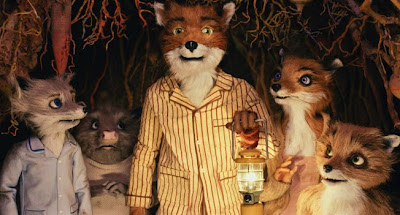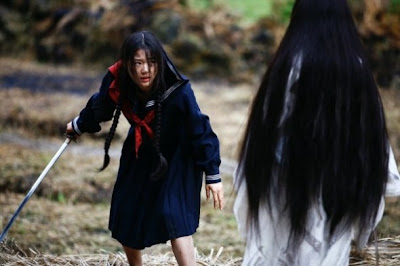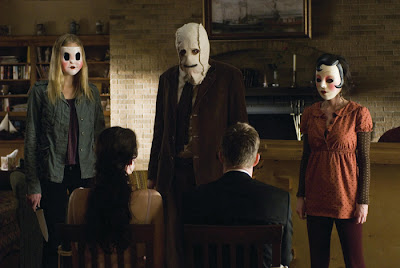
Sherlock Holmes: Robert Downey, Jr.
Dr. John Watson: Jude Law
Irene Adler: Rachel McAdams
Lord Blackmore: Mark Strong
Inspector Lestrade: Eddie Marsan
Mary Morstan: Kelly Reilly
Professor Moriarty: ???
Warner Bros. Pictures presents a film directed by Guy Ritchie. Written by Michael Robert Johnson and Anthony Peckham and Simon Kinberg and Lionel Wigram. Based on the characters created by Sir Arthur Conan Doyle. Running time: 128 min. Rated PG-13 (for intense sequences of violence and action, some startling images and a scene of suggestive material).
In life there are some professions that require one to know a little about a great many things, or there are jobs that require expertise in a very confined field of knowledge with little awareness of anything else. In movies, the experts are generally experts on a great many things. Sherlock Holmes is known as the world’s greatest detective, but in the new movie “Sherlock Holmes” he is oh so much more than just a mere detective.
In Guy Ritchie’s new film, Sherlock Holmes is a detective, a chemist, a martial artist, a doctor, a master of disguise, a weapons specialist, an expert character profiler, despite his social shortcomings, and a romantic. To say this is not your grandfather’s Sherlock Holmes would not only make me guilty of utilizing an overused aphorism, but it would also be a gross understatement. This is the superhero version of Sherlock Holmes.
Robert Downey, Jr. uses the same unbalanced charm that made his Tony Stark in “Iron Man” such a hit to make this new take on Holmes just as enjoyable. Downey is witty, humorous, and makes you want to hang out with him and learn something, even though it does appear he might have a slight odor to him. The only thing saving Holmes from a boorish downfall is his relationship with Dr. John Watson, the ballast to Holmes’s wavering ship of human scrutiny and unchecked etiquette. As Watson, Jude Law (“Sleuth”) brings stability to the entire film with his good looks and a grounding reason.
As the film opens, Holmes and Watson are on their “final case” together. Watson is engaged to be married to Mary Morstan (Kelly Reilly, “Me and Orson Welles”), who is glad to remove her man from the negative influence of Holmes. Holmes and Watson have tracked down Lord Blackmore after a string of ritual occult murders, only to see him reappear after he is put to death for the killings. While Blackmore uses fear to keep the local constabulary off its game, Holmes and Watson try to overlook the notion of the paranormal in cracking the Blackmore case. All the while Irene Adler, a former foe or lover of Holmes who is working for a mysterious benefactor, dogs them.
Mark Strong (“Body of Lies”), while certainly a passable heavy, makes little of the role of Blackmore. Of course, it is not Blackmore himself, but his scheme and his methods that are of interest. Rachel McAdams makes a stronger—no pun intended—impression as the one person who seems capable of outsmarting Holmes. With her two roles this year—here and in the overlooked political thriller “State of Play”—McAdams continues to prove herself as an A-list actress, able to pick smart roles in strong movies.
The screenwriters do a good job of updating the Holmes mythology for a modern audience. Some might complain that the language and action of the film are a little too modern for its period setting, but the script keeps Holmes’s analytical mind at the forefront of all its action with a plot that holds onto Sir Arthur Conan Doyle’s original ideals of facing paranormal developments from a scientific point of view. Even the fistfights are laid out in Holmes’s mind before they happen. Despite the fact that Holmes continually is placed against adversaries that are physically superior to him, the technique used to show the audience how he will defeat his opponents before the action actually occurs helps to make it more plausible that he could defeat them.
Ritchie’s kinetic direction works well with the modern retrofit. Ritchie has mostly tinkered in modern low level crime thrillers like “Lock, Stock and Two Smoking Barrels” and “RocknRolla”. He hasn’t fared well with critics, but has a flare for presenting the grimy underworld of the British crime scene. That gift serves him well with this period crime material. Holmes’s London is not the clean, sharp skyscape of today with the likes of the Gherkin building, but a London when the streets were overcrowded, dirty with the grind of newborn industrialism, and filled with the stench of Thames’s waterfront slaughterhouses. It isn’t far removed from the cockney antiestablishment of Ritchie’s modern crime studies.
“Sherlock Holmes” is not as groundbreaking as some of this year’s more successful blockbuster fare, but it’s more engaging than others. The cast does a wonderful job making the movie a lot of fun, while the filmmakers have put a great deal into its atmosphere. You’ll have fun watching Holmes’s latest adventure, and that’s really what’s important with a movie like this one. I’m already anxious to see another Holmes case, provided it’s done with the wit and style of this one.
Dr. John Watson: Jude Law
Irene Adler: Rachel McAdams
Lord Blackmore: Mark Strong
Inspector Lestrade: Eddie Marsan
Mary Morstan: Kelly Reilly
Professor Moriarty: ???
Warner Bros. Pictures presents a film directed by Guy Ritchie. Written by Michael Robert Johnson and Anthony Peckham and Simon Kinberg and Lionel Wigram. Based on the characters created by Sir Arthur Conan Doyle. Running time: 128 min. Rated PG-13 (for intense sequences of violence and action, some startling images and a scene of suggestive material).
In life there are some professions that require one to know a little about a great many things, or there are jobs that require expertise in a very confined field of knowledge with little awareness of anything else. In movies, the experts are generally experts on a great many things. Sherlock Holmes is known as the world’s greatest detective, but in the new movie “Sherlock Holmes” he is oh so much more than just a mere detective.
In Guy Ritchie’s new film, Sherlock Holmes is a detective, a chemist, a martial artist, a doctor, a master of disguise, a weapons specialist, an expert character profiler, despite his social shortcomings, and a romantic. To say this is not your grandfather’s Sherlock Holmes would not only make me guilty of utilizing an overused aphorism, but it would also be a gross understatement. This is the superhero version of Sherlock Holmes.
Robert Downey, Jr. uses the same unbalanced charm that made his Tony Stark in “Iron Man” such a hit to make this new take on Holmes just as enjoyable. Downey is witty, humorous, and makes you want to hang out with him and learn something, even though it does appear he might have a slight odor to him. The only thing saving Holmes from a boorish downfall is his relationship with Dr. John Watson, the ballast to Holmes’s wavering ship of human scrutiny and unchecked etiquette. As Watson, Jude Law (“Sleuth”) brings stability to the entire film with his good looks and a grounding reason.
As the film opens, Holmes and Watson are on their “final case” together. Watson is engaged to be married to Mary Morstan (Kelly Reilly, “Me and Orson Welles”), who is glad to remove her man from the negative influence of Holmes. Holmes and Watson have tracked down Lord Blackmore after a string of ritual occult murders, only to see him reappear after he is put to death for the killings. While Blackmore uses fear to keep the local constabulary off its game, Holmes and Watson try to overlook the notion of the paranormal in cracking the Blackmore case. All the while Irene Adler, a former foe or lover of Holmes who is working for a mysterious benefactor, dogs them.
Mark Strong (“Body of Lies”), while certainly a passable heavy, makes little of the role of Blackmore. Of course, it is not Blackmore himself, but his scheme and his methods that are of interest. Rachel McAdams makes a stronger—no pun intended—impression as the one person who seems capable of outsmarting Holmes. With her two roles this year—here and in the overlooked political thriller “State of Play”—McAdams continues to prove herself as an A-list actress, able to pick smart roles in strong movies.
The screenwriters do a good job of updating the Holmes mythology for a modern audience. Some might complain that the language and action of the film are a little too modern for its period setting, but the script keeps Holmes’s analytical mind at the forefront of all its action with a plot that holds onto Sir Arthur Conan Doyle’s original ideals of facing paranormal developments from a scientific point of view. Even the fistfights are laid out in Holmes’s mind before they happen. Despite the fact that Holmes continually is placed against adversaries that are physically superior to him, the technique used to show the audience how he will defeat his opponents before the action actually occurs helps to make it more plausible that he could defeat them.
Ritchie’s kinetic direction works well with the modern retrofit. Ritchie has mostly tinkered in modern low level crime thrillers like “Lock, Stock and Two Smoking Barrels” and “RocknRolla”. He hasn’t fared well with critics, but has a flare for presenting the grimy underworld of the British crime scene. That gift serves him well with this period crime material. Holmes’s London is not the clean, sharp skyscape of today with the likes of the Gherkin building, but a London when the streets were overcrowded, dirty with the grind of newborn industrialism, and filled with the stench of Thames’s waterfront slaughterhouses. It isn’t far removed from the cockney antiestablishment of Ritchie’s modern crime studies.
“Sherlock Holmes” is not as groundbreaking as some of this year’s more successful blockbuster fare, but it’s more engaging than others. The cast does a wonderful job making the movie a lot of fun, while the filmmakers have put a great deal into its atmosphere. You’ll have fun watching Holmes’s latest adventure, and that’s really what’s important with a movie like this one. I’m already anxious to see another Holmes case, provided it’s done with the wit and style of this one.






















